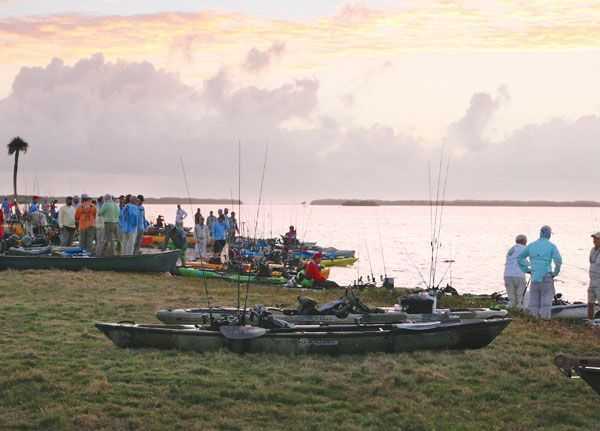There is a battle raging on our nation’s waterways—a paddle battle. Highly maneuverable, shallow drafting stealth bombers are invading liquid territory formerly unexplored by few, if any. No creek, pond, river, bay or even the five oceans are safe from the legions paddling our planet. In over 30 years of exploring miles of waterways throughout the United States I have never seen a trend explode like the one we are experiencing now. Kayaks, paddle boards and canoes have become more popular than ever before, and with good reason.
Not only fisherman, but hunters, campers, photographers and other outdoor enthusiast of all ages have discovered a whole new motor free way to enjoy millions of miles of water. Kayaks, canoes and paddleboards have become extremely high tech, at a fraction of the cost of their motorized counterparts. The smallest of vehicles can transport nearly any of the many vessels available, and more and more, outfitters are springing up that provide low cost daily guided trips or rentals.
For the angler, these shallow drafting machines can get to places where motorized boats can’t, period. Kayaks and their paddling cousins can be dragged and in some instances carried into places where fish only imagined they were safe. The lack of sound provided by these stealthy stalkers leaves many fish completely unaware of the fisherman’s presence. The fishing opportunities don’t end there, as many kayaks are built for the rigors of fast moving rocky mountain streams as well as open ocean water. There are foot paddled kayaks that leave anglers with total hands free operation, and naturally offering more range and control in current. The accessories now offered for the kayak fisherman almost make it unfair for fish. There are electric propulsion options as well as electric anchoring options. These are only a microcosm of options available to optimize an already deadly fishing machine. Competitive kayak fishing tournaments are springing up everywhere, and the fish that are being caught not only equal, but often exceed those being caught by their high horse powered, gas guzzling rivals.
While most of us are fairly familiar with canoes or canoeing, they too have become optimized with the availability of options and new light weight, durable construction. Both kayaks and canoes offer multi-passenger versions which are also easy to transport.
The paddleboard, while a little trickier to fish off of, is an absolute blast, as it offers the paddler the chance to stand up while gliding into the unknown. (A good friend of mine has actually done pretty well sight fishing off of his board.) At first glance the paddleboard looks like a glorified surfboard, but that is not the case. These boards have been balanced and designed to maximize tracking, resulting in a surprisingly fast and easy to propel ride.
One of the biggest advantages to paddling is access. Launching kayaks, paddle boards and canoes only requires minimal effort and water. These vessels do not require boat ramps and can be easily launched at nearly any public place where water meets land. Portability is another advantage in shallow water scenarios as these light watercraft can be easily transported when working areas that become shallow. More and more, our waterways are limiting or eliminating combustion engines in certain sensitive areas that are teaming with wildlife, fish, and other marine habitat. When considering the future of our waterways, paddling has virtually no negative impact on the environment.
While many outdoor activities are often prefaced with “may not be for everyone” these paddling options probably are for everyone—so arm your self today.
[easy-social-share]


